At a glance
Many seemingly healthy foods can disrupt ketosis, and even low-carb options may contain ingredients that raise blood sugar, contribute to inflammation, or stall fat burning. Learning to distinguish between keto-friendly and non-keto foods can help maintain balanced glucose levels and support long-term ketosis.
Maintaining ketosis is crucial to reap the metabolic benefits of a ketogenic diet.
Many new dieters assume they’re making keto-friendly choices, unaware that excess protein, hidden sugar, and modified starches can imbalance blood glucose levels and slow fat burning.
Discover which foods to avoid on keto to maintain ketosis, support metabolic balance, and achieve your health and weight loss goals.
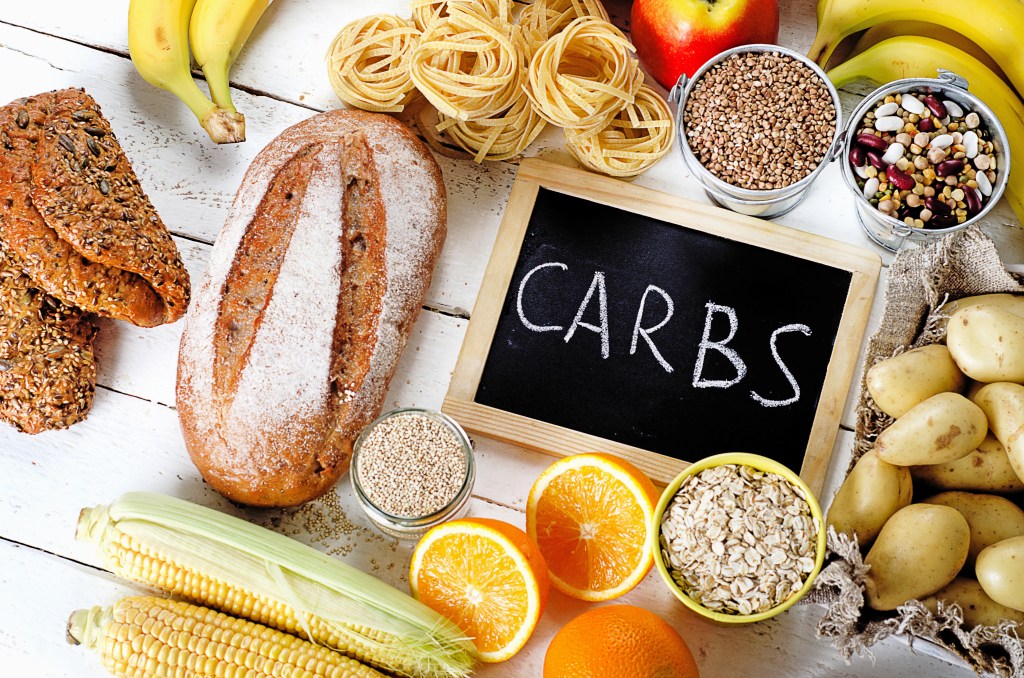
What foods should you avoid on keto?
The ketogenic diet is a high-fat, moderate-protein, and low-carb eating plan that pushes the body to use fat instead of sugar to generate energy for the cells.
Dieters can achieve this metabolic state, known as ketosis, by limiting carb intake and avoiding sugary and starchy foods.
By significantly reducing carbohydrate intake, the body depletes glycogen stores and begins to break down fats to generate energy, which triggers the release of large amounts of ketones.
Ketones, also known as ketone bodies, are a group of organic compounds that serve as a highly efficient and stable alternative fuel source to glucose.
While some versions of the ketogenic diet, such as dirty keto, emphasize macronutrient ratios over food quality, Healthy Keto® focuses on nutrient density to optimize health and achieve weight loss goals simultaneously.
Watch the video below to discover the worst low-carb foods to avoid.
High-carb foods to cut out
When following a keto diet, cutting back on carb consumption is vital to achieve fat burning, lose weight, and reach your health goals.
However, many common foods that are seemingly healthy on other eating plans contain too many carbohydrates for a strict keto diet.
Here are five high-carb foods to eliminate from your low-carb diet.
1. Grains
Bread, pasta, rice, and baked goods made from wheat, corn, oats, buckwheat, quinoa, and other grains should be avoided on a keto diet.
These grains have a high carbohydrate content, and consuming even small amounts can raise blood sugar levels and trigger insulin release, which disrupts the ketosis process and slows fat-burning.
2. Legumes and beans
Although rich in fiber, beans and lentils contain too many carbohydrates to maintain ketosis.
Beans and legumes also contain antinutrients, such as phytates and lectins, which can interfere with the body’s ability to absorb essential minerals like iron, zinc, and calcium.
However, sprouted beans, green beans, organic soybeans, and hummus, which is made from chickpeas, are acceptable on a keto diet as long as you remain within your daily net carb limit.
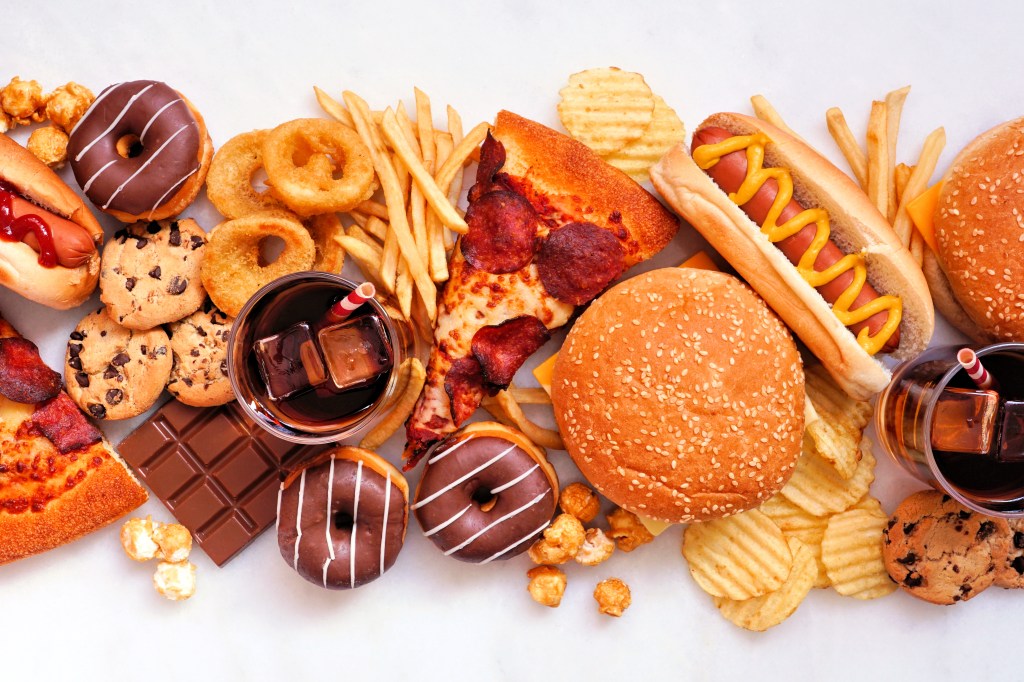
3. Sugar and processed foods
It’s crucial to eliminate all processed and sugary foods, such as cereal, soda, candy, and desserts, as they trigger blood sugar fluctuations and prevent your body from entering ketosis.
Even natural sugars, such as honey, molasses, agave, and maple syrup, should be avoided to keep blood glucose and insulin levels stable.
4. Starchy vegetables
A well-formulated and health-focused keto diet should include plenty of nutrient-dense vegetables.
However, starchy vegetable varieties, such as white potatoes, sweet potatoes, and peas, are high in carbohydrates and can make weight management difficult for those with slow metabolisms.
While carrots are considered starchy root vegetables, small portions can still fit into a keto diet, especially when eaten in moderation and balanced with lower-carb foods.
5. Most fruits
Many fruits are naturally high in sugar and carbohydrates. Because low-carbohydrate intake is essential on a keto diet, avoiding fruits such as bananas, apples, pears, pineapple, grapes, and oranges is vital to stay in ketosis.
Fruit juices, such as orange or apple juice, are also not keto-friendly, as they quickly elevate blood glucose and insulin levels, which can rapidly kick you out of fat-burning mode.
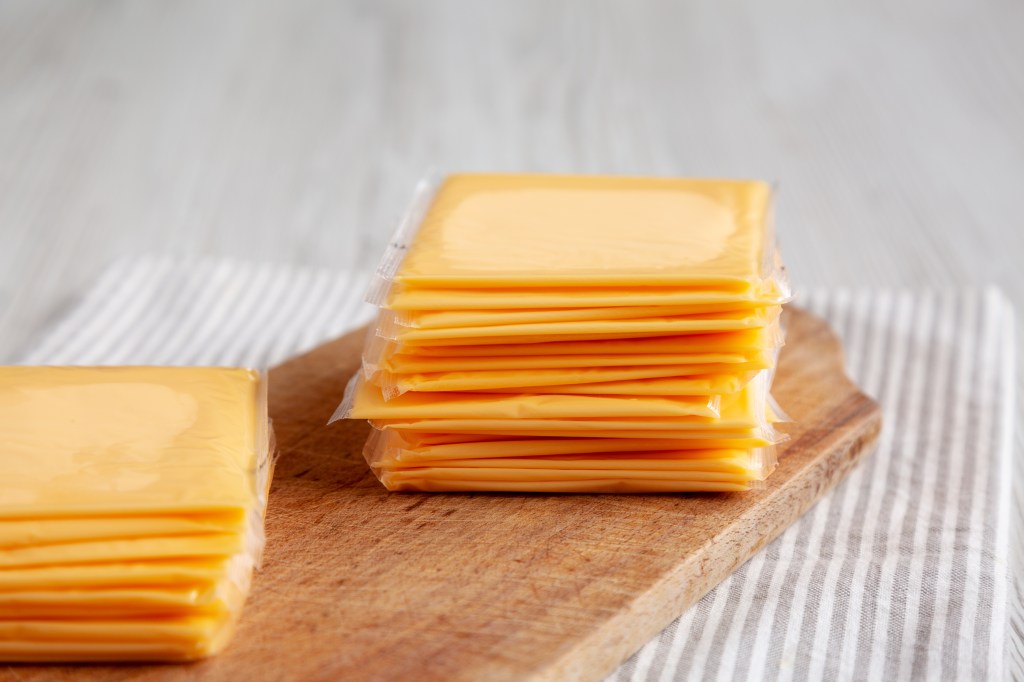
Low-carb foods that stop ketosis
Low carbohydrate intake is key to success on the ketogenic diet. But not all “low-carb” foods support ketosis and weight loss.
Certain additives, unhealthy seed oils, or highly processed ingredients can halt keto progress and worsen health over time.
A typical example is processed cheese. Despite being low in carbs, processed cheese products often contain added starches, preservatives, and inflammatory seed oils.
Additionally, low-fat dairy products, such as skim milk or low-fat yogurt, are high in lactose, which is a milk sugar that can raise blood glucose levels and interfere with ketosis.
Conventional processed meats, including lunch meats, hot dogs, deli meats, and many bacon products, contain nitrates, sugar, and hidden fillers that can disrupt ketosis.
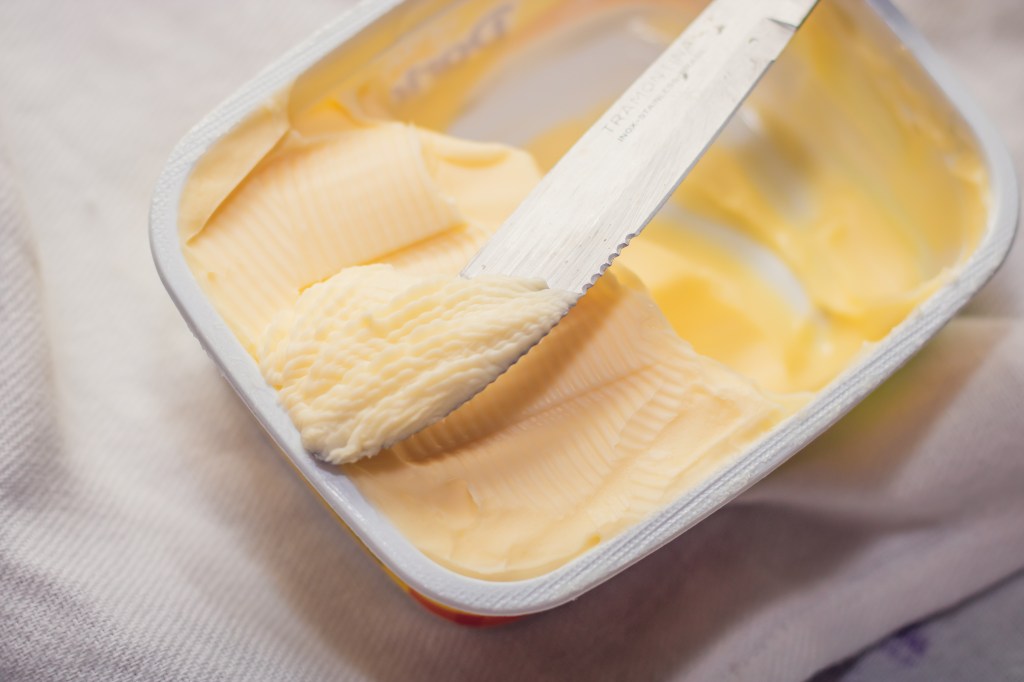
While margarine and vegetable oils are low-carb and won’t stop ketosis, they’re high in omega-6 fatty acids and produce unhealthy trans fats when heated. This can promote inflammation and increase the risk of cardiometabolic diseases.
Even products that appear keto-friendly on the label can hide a variety of ingredients that can stall weight loss and impede your health goals.
For example, certain sugar alcohols found in keto desserts, such as maltitol, can raise blood sugar levels and trigger cravings.
Nut bars, protein powders, and low-carb snacks are also common culprits that often contain seed oils, preservatives, and high-glycemic starches, such as maltodextrin.
While these additives enhance texture and extend shelf life, they can disrupt blood sugar balance, impair gut health, and promote inflammation, all of which undermine the benefits of a ketogenic diet.
“Just because a food is low-carb, doesn’t mean it’s keto-friendly,” explains Dr. Berg. “Many of these foods contain additives and fillers that prevent ketosis and harm metabolic health, which highlights the importance of choosing nutritious whole-food options that support fat-burning.”
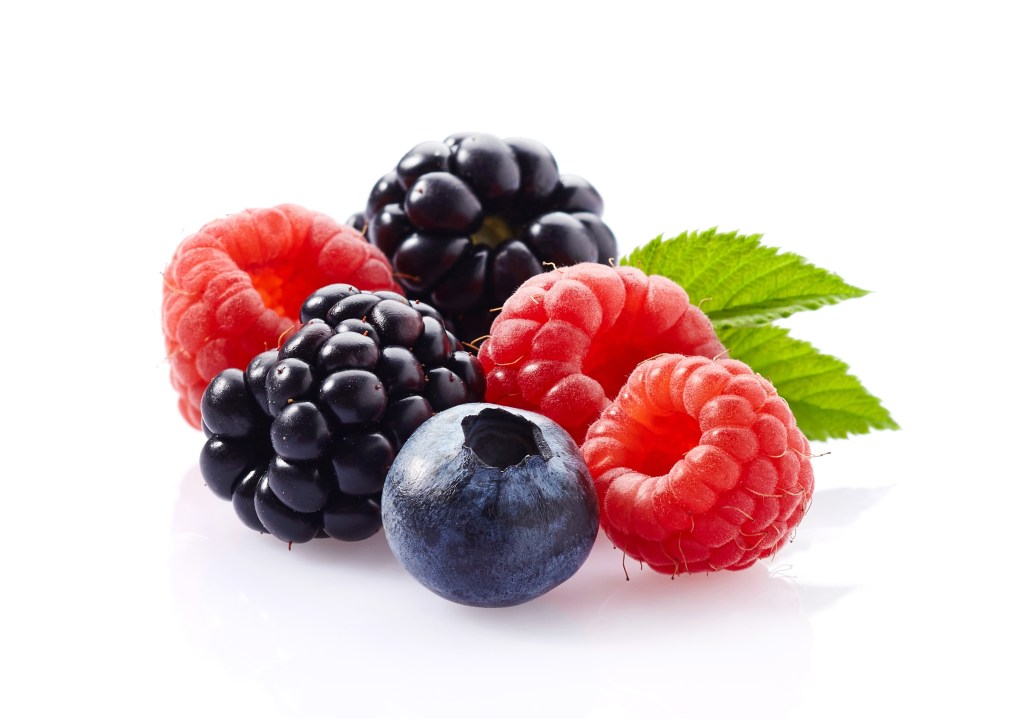
Foods to limit on keto
A typical macronutrient ratio on keto consists of approximately 75 percent fat, 20 percent protein, and no more than 5 percent carbohydrates.
To achieve and maintain ketosis, most individuals limit their daily carbohydrate intake to between 20 and 50 grams of net carbs.
Even nutritious foods, such as berries, are best enjoyed in moderation, and all foods containing carbohydrates should be included in your total carb count to avoid exceeding the limit.
However, individual responses to berries can vary. While some people may be able to enjoy moderate amounts of berries without disrupting ketosis, others may find that even small portions can affect their ketone levels.
Additionally, protein should be limited to between three and six ounces per meal, depending on your activity level and body composition.
Consuming more protein than the body needs can stimulate gluconeogenesis, a metabolic pathway during which excess amino acids are converted into glucose. This can impact blood sugar balance and interfere with ketosis.
The majority of your daily energy needs should come from nutritious fats. However, individuals with a slow metabolism or those aiming for significant weight loss may need to closely monitor their fat intake to avoid excessive energy intake.
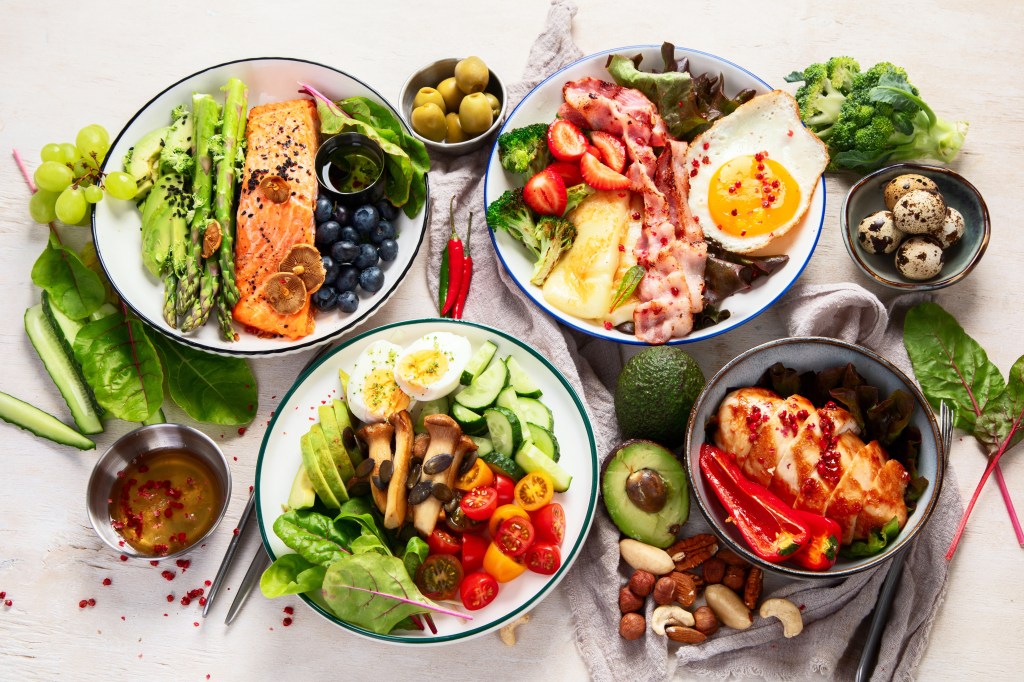
Keto-friendly foods to enjoy
Keto doesn’t have to be restrictive–there are plenty of delicious and nutritious low-carb options on the keto foods list.
On keto, healthy fats replace carbohydrates as the body’s primary energy source. Extra-virgin olive oil, coconut oil, avocado oil, nuts, and seeds are excellent sources of fat that promote satiety and help maintain steady energy levels throughout the day.
Grass-fed, fatty meat, wild-caught fish, pasture-raised eggs, and full-fat dairy are also key components of a Healthy Keto diet. These foods offer essential fatty acids, amino acids, and fat-soluble vitamins A, E, D, and K.
Animal products are also rich in health-promoting saturated fat, which is vital for cognitive function, immune defenses, skin health, and hormone synthesis.
Despite common misconceptions, saturated fats aren’t bad, especially when consumed as part of a nutritious, low-carb diet.
A study published in the American Journal of Clinical Nutrition concluded that “…there is no significant evidence that dietary saturated fat is associated with an increased risk of coronary heart disease or cardiovascular disease.”1
Additionally, non-starchy vegetables, such as leafy greens, can be consumed in unlimited amounts. These vegetables are low in carbohydrates and provide a variety of nutrients, including fiber, vitamins, and minerals that boost nutrition and help stabilize blood sugar levels.
Low-sugar fruits, such as berries and lemons, can also be enjoyed in small quantities. These options provide powerful antioxidants and phytonutrients that protect against free radical damage and oxidative stress without disrupting ketosis.
Key takeaways
- Grains, sugars, starchy vegetables, low-fat dairy products, and many processed “low-carb” products can raise blood glucose levels, trigger insulin release, and disrupt ketosis.
- Some packaged low-carb foods contain hidden starches, sweeteners, and seed oils that can stall fat burning and contribute to inflammation, undermining the benefits of ketosis.
- Focusing on nutrient-dense whole foods, such as healthy fats, grass-fed meats, full-fat dairy, and plenty of non-starchy vegetables, helps sustain healthy ketosis.
- Monitoring portions of keto-friendly foods such as berries and protein can help maintain stable ketone levels and overall metabolic balance.
FAQ
1. What are the top foods to avoid on keto?
Grains, refined sugars, processed foods, as well as most fruits, legumes, beans, and starchy vegetables, should be avoided on a ketogenic diet.
Additionally, seemingly keto-friendly processed foods often contain ingredients that can inhibit ketosis, such as maltodextrin, maltitol, and other hidden starches and sugars. These products are also highly processed and typically provide little nutritional value.
2. How many carbs kick you out of ketosis?
To maintain ketosis, most keto dieters consume fewer than 50 grams of net carbs daily. However, those with a slow metabolism, significant weight to lose, or metabolic conditions may benefit from reducing their total intake to 20 net carbs or lower.
3. Are “keto-friendly” packaged snacks really safe?
No, most pre-packaged snacks aren’t keto-friendly and contain ingredients such as maltodextrin and refined seed oils that are inflammatory, can elevate blood glucose levels, inhibit ketosis, and can slow weight loss efforts.
4. How do I know if I’m out of ketosis?
The best way to know if you’ve been kicked out of ketosis is by monitoring your ketone levels with a breath, blood, or urine ketone tester. Signs that you’re no longer in ketosis can include fatigue, brain fog, mood swings, energy crashes, cravings, and slow weight loss.
5. Is it okay to have cheat days on keto?
It’s not recommended to make cheat days a habit, as it can take several days to get back into ketosis and weeks to become fully fat-adapted again.












